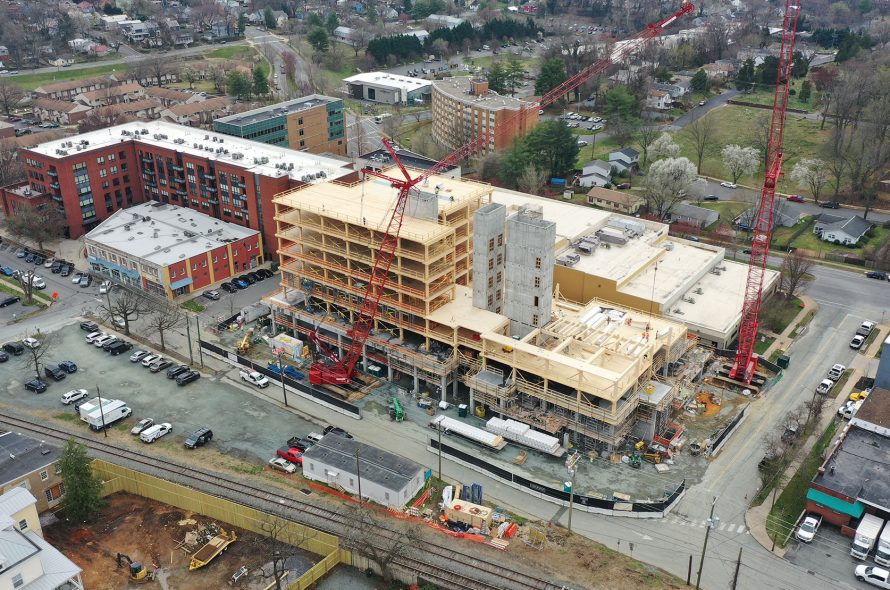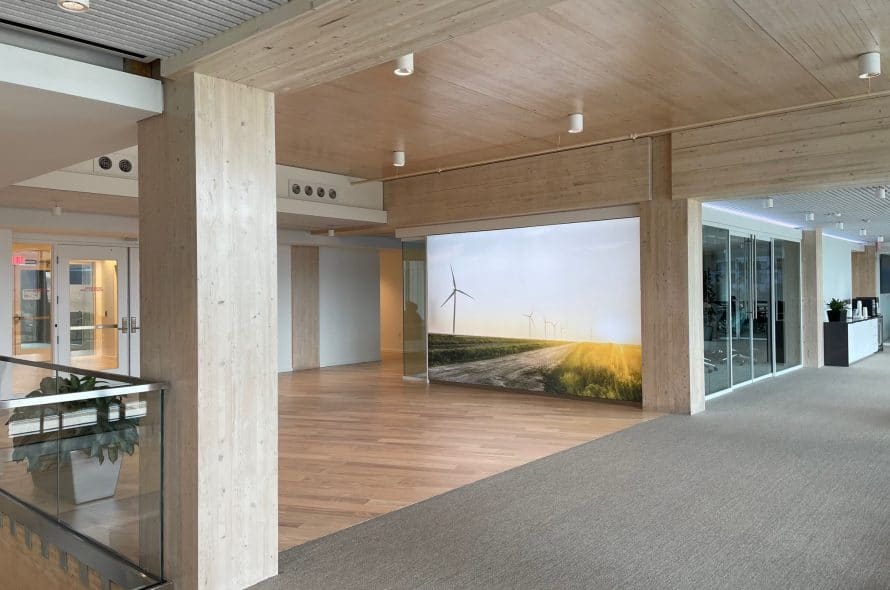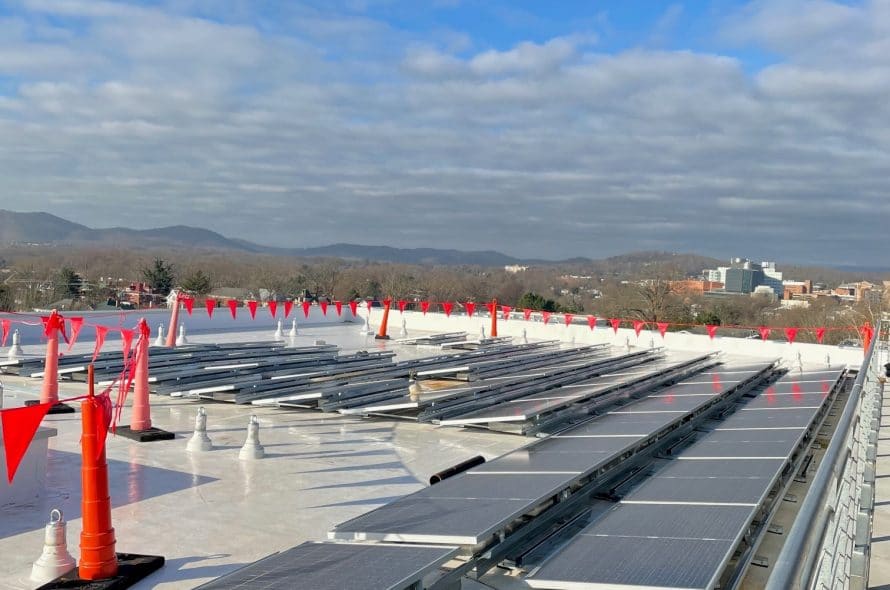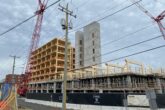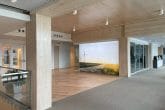Cross-Laminated Timber
One of the most exciting developments over the past few years is the resurgence of wood as a major building material for walls, floors, decking and roofs. In fact, cross-laminated timber (CLT) and other manufactured mass timber products are viable alternatives to concrete and steel, and in some ways can run rings around traditional building materials. Some of CLT’s most significant benefits include:
Sustainability — The wood used in CLT is sustainably grown and harvested from Forest Stewardship Council certified sources. Producing and transporting CLT panels requires less energy than building on site with traditional materials. And the sustainable benefits continue to benefit the environment as buildings constructed of mass timber products store CO2 in the same way a healthy tree does, reducing the carbon footprint and releasing oxygen back into the atmosphere.
Health — Studies show that infusing natural elements into the built environment can reduce stress, improve cognitive function and enhance mood and creativity.
Efficiency — Features like doors and window openings can be cut into the CLT panels at the factory before they are shipped to the job site, reducing the amount of framing needed on site and positively impacting budget and schedule. Delivery of panels can be phased to reduce staging area requirements, which is particularly important on tight urban infill sites.
Versatility — CLT and other mass timber products are appropriate for mid- and high-rise construction of commercial, mixed-use, multi-family, senior living, education and healthcare facilities.
Beauty — Unlike most building materials that are meant to be covered, CLT can be left visible to enhance the aesthetic appeal of the building. Timber construction also allows for higher ceilings which brings more light into interior spaces.
While CLT brings aesthetic beauty and cost-saving efficiencies, the true success of a project comes from the mastery of construction technology and precision coordination.





